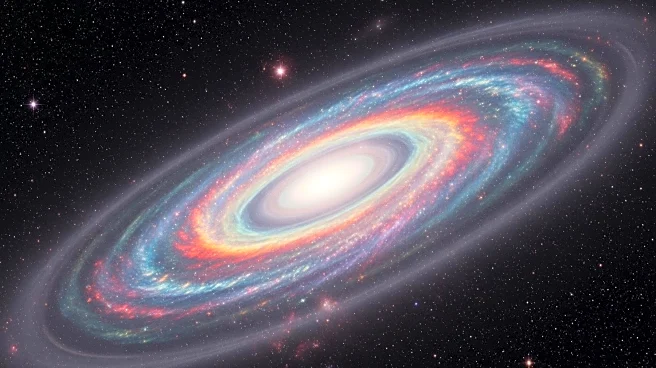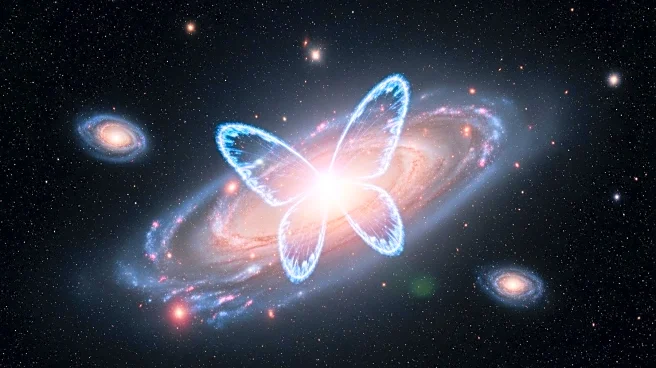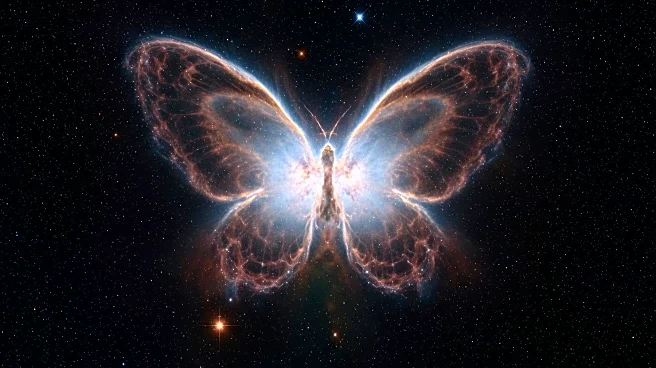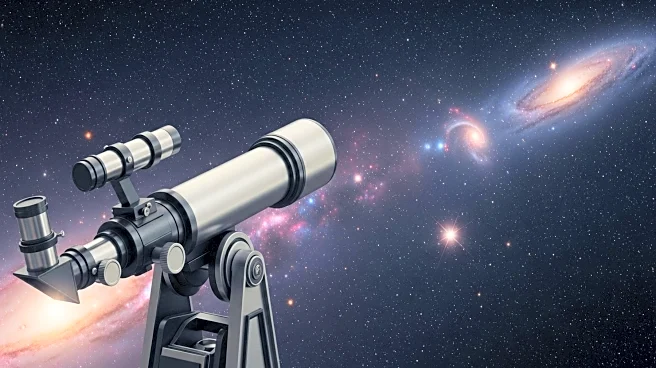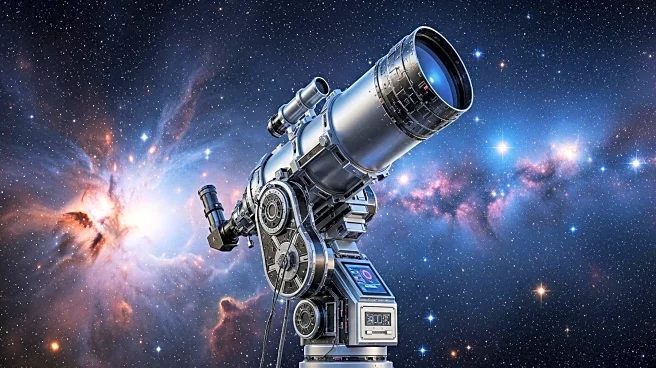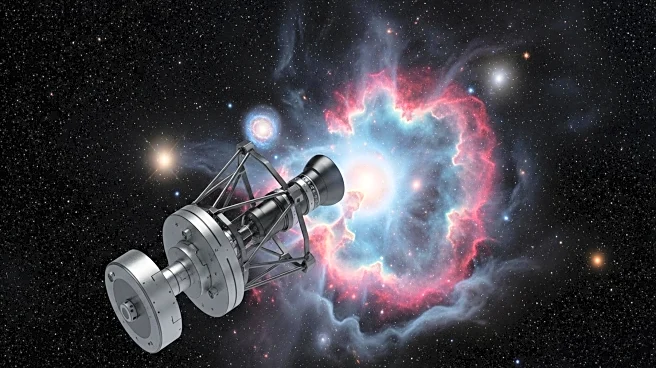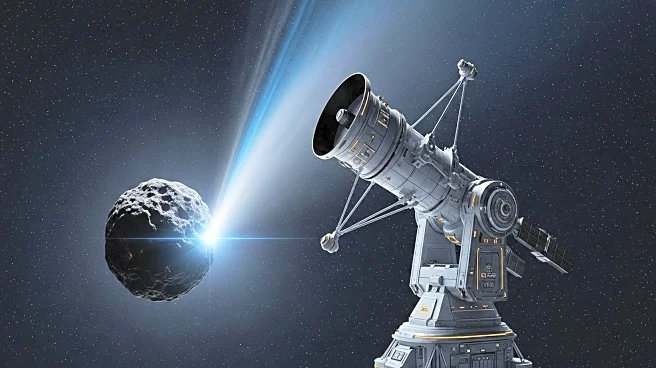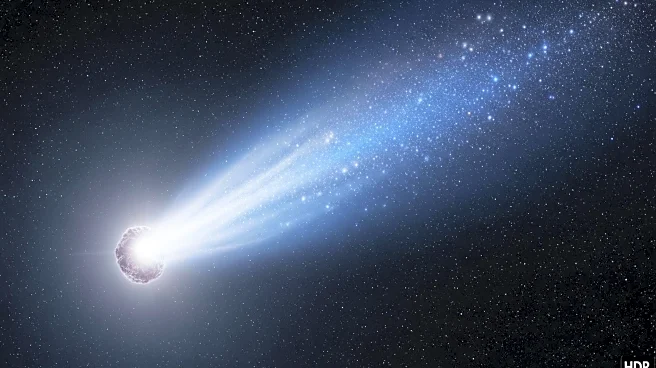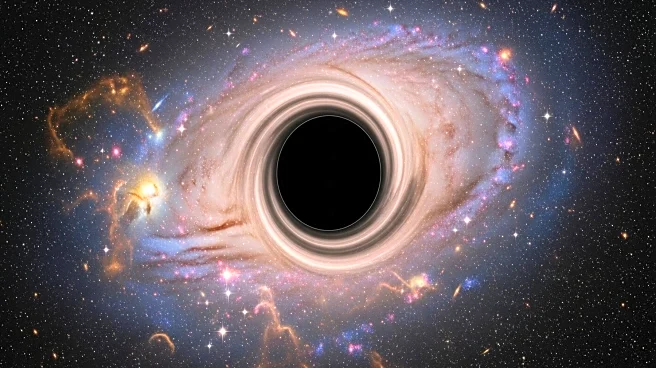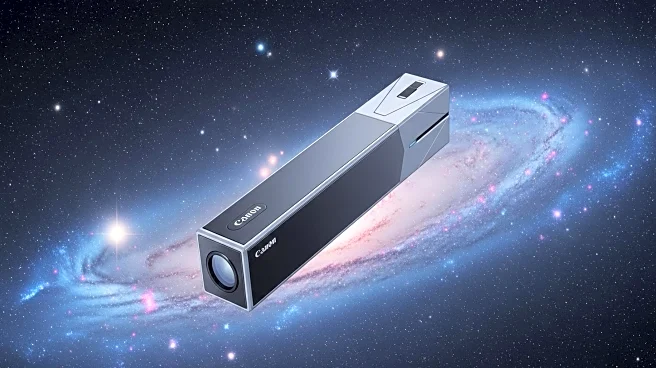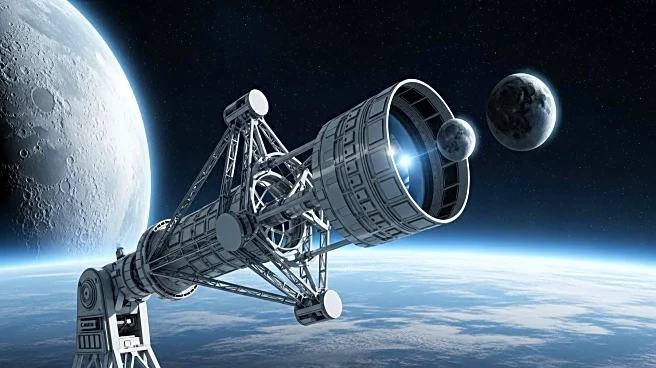What is the story about?
What's Happening?
The James Webb Space Telescope (JWST) has discovered a peculiar protoplanetary disk around the infant star XUE 10, located in the star-forming region NGC 6357. This disk is characterized by a high concentration of carbon dioxide and a low presence of water vapor, challenging existing models of planet formation. The discovery was made by the eXtreme Ultraviolet Environments (XUE) collaboration, which studies the impact of radiation on disk chemistry. The findings suggest that intense ultraviolet radiation may be altering the chemical composition of the disk, potentially affecting planet formation processes.
Why It's Important?
This discovery has significant implications for our understanding of planet formation and the diversity of planetary systems. The unusual chemical composition of the disk could lead to new insights into how planets develop in different environments. It also highlights the role of radiation in shaping planetary atmospheres, which is crucial for assessing habitability potential. The research underscores the capabilities of the JWST in detecting chemical fingerprints in distant protoplanetary disks, advancing our knowledge of the universe's formation processes.
What's Next?
Further studies will likely focus on analyzing the impact of radiation on protoplanetary disks and exploring the implications for planet formation theories. Researchers may investigate other star-forming regions to determine if similar chemical compositions exist elsewhere. The findings could lead to revisions in current models of disk evolution and planet formation, influencing future astronomical research and exploration missions. Collaboration among international research teams will be essential to deepen our understanding of these phenomena.
AI Generated Content
Do you find this article useful?
